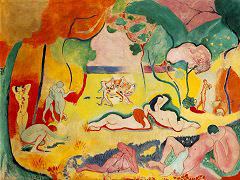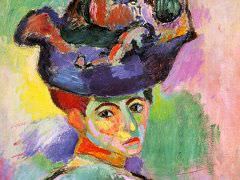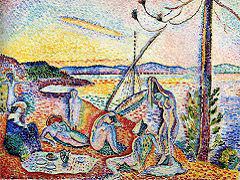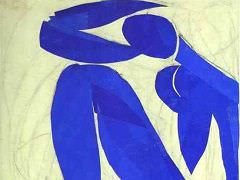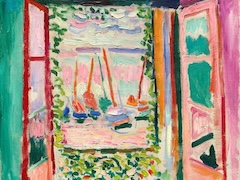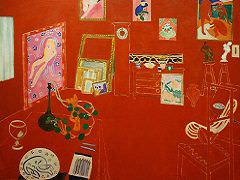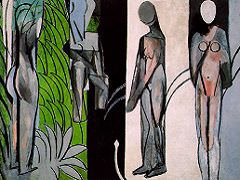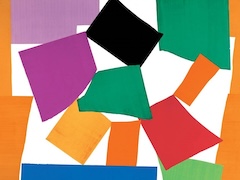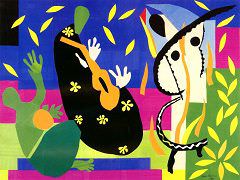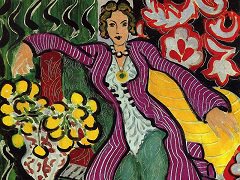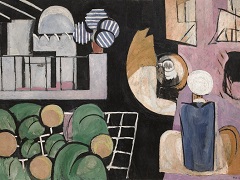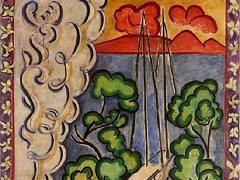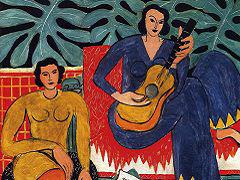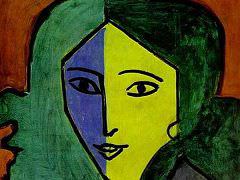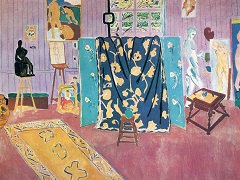Standing Nude, 1907 by Henri Matisse
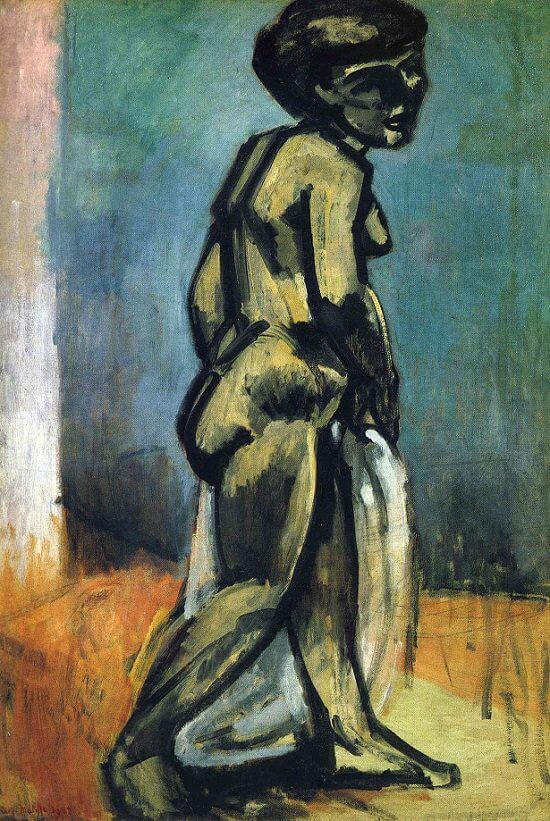
In the context of Matisse's evolving figure style in these years, this picture, with its firmly modeled, massive, angular contours and squat proportions, emphasized by a rather oversize head, seems something of an anomaly. In spite of its vastly different palette, it almost seems a retrogression to the academies of 1900, exemplified by Male Model. Alternatively, we might suppose this figure to be connected with a contemporary project in sculpture, but nothing of this sort is the case, since by now Matisse was already modeling his bronze female figures into arabesques resembling the major figure of Le Luxe.
Consequently, we must see this Proto-Cubist figure study as another of Matisse's retrospective glances, although not such a drastic one as Carmelina. Nor is this a hesitant, insecure look backward. Alfred Barr very rightly associates this picture with what he calls "Cezanne and the crisis of 1907-8," a phenomenon that affected not only the Fauves - Matisse, Derain, Dufy, Vlaminck - but also Picasso, a crisis that brought about the defection of Braque from the Fauvist to the Cubist camp. Much of this crisis was worked out in landscape painting. Braque's famous studies at L'Estaque in 1907 are well known, but even an artist like Dufy, who would not follow further into Cubism, painted anti-Fauve, Cezannesque landscapes on the same site in 1908. On the other hand, the great post-Cezanne breakthrough into Cubism dates from Picasso's Les Demoiselles d'Avignon of 1907, and hence Matisse's Standing Nude takes its place beside the more ambitious work of the Catalan artist. The two had met for the first time the previous fall at the apartment of Leo and Gertrude Stein, but there is no certainty that Matisse knew of the Demoiselles when he painted the present figure. On the basis of his earlier preoccupation with Paul Cezanne, we need not look for an outside stimulus for this composition.
It is especially significant that Matisse rarely followed up this line of research in his subsequent figure paintings. He had already digested his lessons from the Aix master earlier in the decade, and after the completion of Joy of Life he had outdistanced not only Fauvism in its narrower sense but also the need to study Cezanne in a quasi-scholarly fashion. By 1907, Matisse was on his way to an anti-Cubist mode of figure design, emphasizing the powerful decorative force of the linear arabesque. Matisse's and Picasso's contrasting routes in these years (1907 - 10) were equally indebted to the figure compositions of Cezanne's crowning years. The older artist's message^was so rich in potential that two diametrically opposed manners could arise from it within the space of less than a decade.

